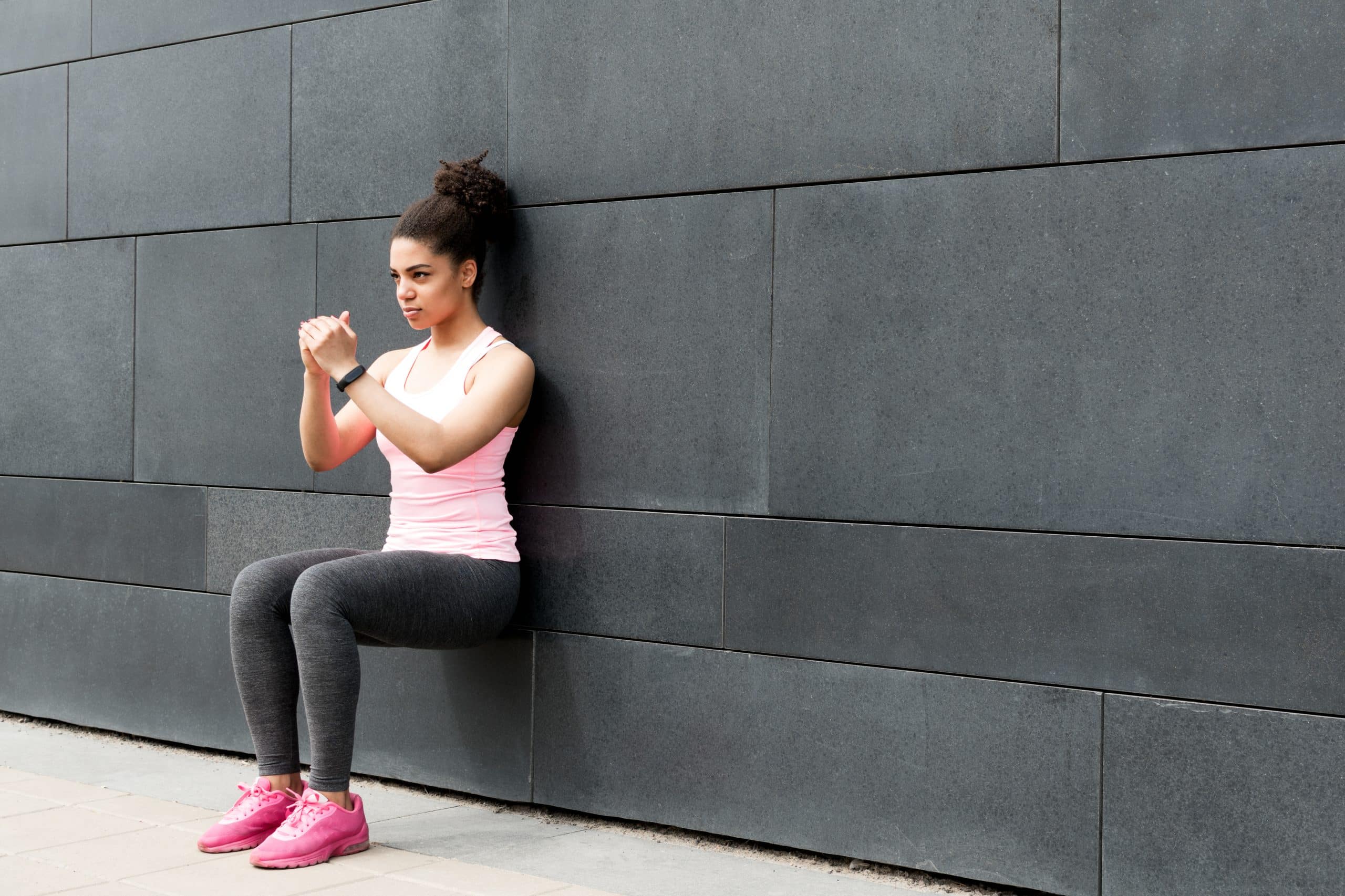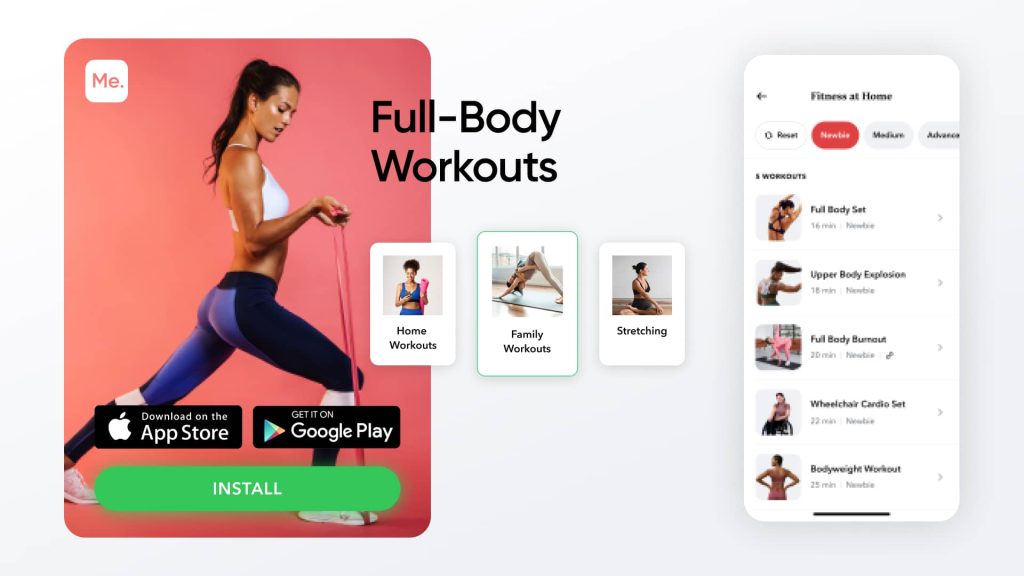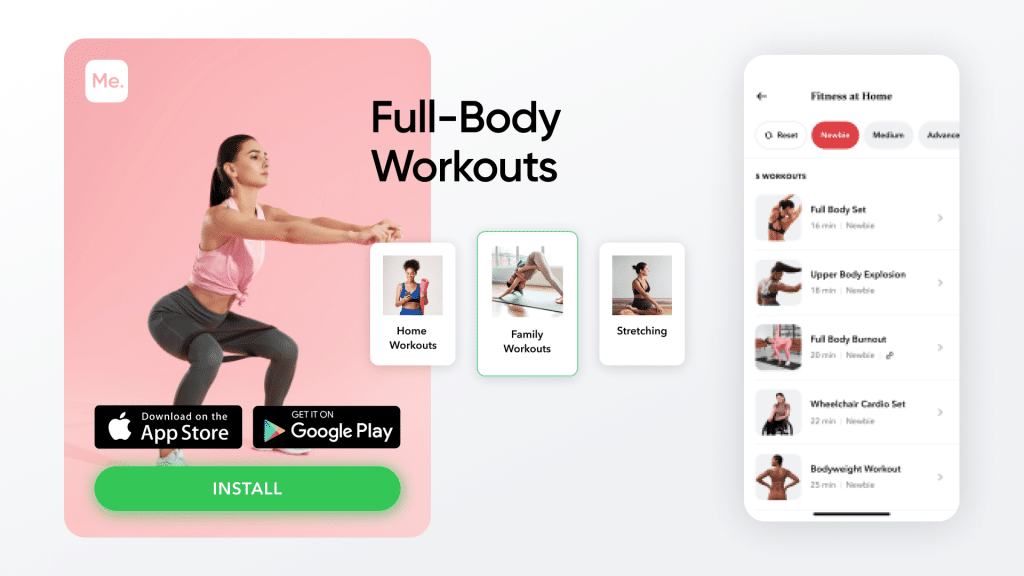The squat is quite old but it’s still a practical exercise that should be incorporated into every sports routine. The benefits of squats are versatile: they strengthen our core, burn up calories, make the muscles of the lower body stronger, boost our athletic ability, etc. That is why even the best professional athletes never neglect them because with the help of squats they are able to change their physique, especially the size of hypertrophy. In addition, squats are perfect for people who desire to get stronger legs and a peachy-looking butt (especially before the summer season). There is a massive amount of squat variations you can implement into gym workouts or just during bodyweight training at home. The most popular are front, back, goblet, split, plié, single-leg squats, and more. However, many debates and even research are connected to two types of squats: front and back. People who are new to the sport and have just purchased a gym membership or decided to train at home have little idea of the squat they should focus on. This isn’t weird because sometimes professional trainers feel confused when asked this question. The point is that both front and back squats benefit our body but they have a tad different results. That said, before choosing the squat you should set a clear goal. Front squat vs back squat – which one is better for you? This article is devoted to the back vs front squat differences, benefits, and techniques. Read the article and make your own conclusion on which squat would be more suitable for your needs.
Get your personalized
meal plan!

What Are The Advantages And Disadvantages Of Squats?
Squats have versatile qualities which explains why people add them to bodyweight workouts and do them at the gyms. This exercise targets muscles in the lower back, legs, and core. It assists people with burning fat and strengthening their core and even no equipment needed. The squat technique is easy and it allows people of all ages and sex train in different squat variations.
Before evaluating front and back squats it is important to understand why squats are so effective and how to do the original moves properly. Your performance depends on how accurately you do the movements which helps you avoid injuries or knee and back pain.
Benefits Of Doing Squats:
- Squats enhance athletic performance (3) without equipment needed.
- They strengthen the muscles in the legs as well as quadriceps, hamstrings, and calves
- Squats make our knee joints stronger.
- They help us burn fat and eliminate calories.
- Squats can reduce the appearance of cellulite on your thighs and glutes (4).
- They improve flexibility in the lower body which is important since with age our body becomes less elastic.
- Squats strengthen the lower back (5).
- This exercise helps you end up with perky booty.
- Squats make your bones stronger by boosting bone mineral density. This adds power to your skeleton and lower body (2).
The Downsides Of Doing Squats:
- Squats might provoke knee pain in the case where you don’t do them properly. To avoid knee pain you should play knees in line with the feet during the exercise.
- Squatting with loads can lead to knee injuries or lower back pain. You will need to consult a trainer before switching to weights.
How To Do Squats Properly:
- Stand with your feet apart and place your hands on your thighs.
- Bend your knees to a 90-degree angle and put all your weight on your heels and sit back slowly.
- Your knees shouldn’t pass your toes, and your head and chest should stay straight.
- Hold the position for a few seconds.
- Rise back again and straighten your hips back to the starting position.
- Repeat 10-15 times.
In a moment you are going to delve into the similarities and differences between front and back squats.
Read More: The Best Squats Workout Plan For Juicy Quads, Hamstrings, And Glutes
Is Front Squat More Effective?
Back squat vs front squat has been the topic of debate among many sportsmen. Let’s imagine you are not a professional athlete and desire to know which squat to start with. The answer won’t surprise you. You should pay attention to your abilities and goals. The point is that the front squat requires more mobility and if you lack it at this moment then probably a back squat is an ideal option for you.
Now about your aim. If you are looking for a way to get more strength and power then you should stick with the back squat but if you’re pursuing killer quads, then front squats are your choice.
With that in mind, it is much better to add both of these squats into your sporting routine and there is no more or less effective one. However, they can bring some different results:
- Strength improvement. Even though both front squat vs back squat weight performance improves strength, back squats allow athletes to lift heavier weights. If your goal is to grow big muscles and become stronger then you should focus on back squats more. Still, the front squat is as effective as the back one and you can lift heavier weights during the performance either but more gradually. Plus, front squats are more advantageous for people with knee problems (1).
- Muscle growth. Both squats make our muscles look bigger but back squats recruit the hamstrings more effectively compared to front squats that activate quads better.
- Sports performance. Back vs front squat show that both of them are an inevitable part of athletes and even beginners. However, we usually use lighter weights and more natural trunk posture with front squats which allows them to be more likely used during workouts.
- Shoulder safety. When we perform back squats we place the bar on the upper back. Hence, our shoulders are externally rotated and abducted. If we have no shoulder joint problems then we can hold a bar in this position. In case we have shoulder issues, it will be harder to hold a bar. Unline back squats and front squats place the bar on the front of the deltoids, or our chest which puts less pressure on our back. This still doesn’t mean you can’t get possible shoulder injuries from the front squat. It is advisable to commence with a lighter weight not to arch your back.
Is Front Squat Harder Than Back Squat?
Research in 2014 indicated that squats are one of the most effective and fundamental movements which improve sports performance, reduce injury risk, and support lifelong physical activity (3).
If you are mulling over the squat you should pick it as the starting point then figure out the level of your mobility and strength. Again, your goal also plays a big part here.
Beginners would rather start with front squats because they are much easier to learn. Still, you will need enough mobility in your shoulders, upper back, hips, and ankles if you want to perform front squats effectively and safely. If you lack mobility, back squatting is a more comfortable option. Plus, back squats allow you to challenge weights faster, unlike front squatting.
Another difference between front squat and back squat is that the first one won’t get you stronger as fast as the second one but it will help you get beautiful toned legs and butt. Back squatting is more focused on developing quads.
Whether you’re a workout beast or just a beginner making your first foray into the world of fitness and dieting – BetterMe has a lot to offer to both newbies and experts! Install the app and experience the versatility first-hand!
Here is how you are performing back squats:
- Place a barbell behind your head safely.
- Stand with your feet shoulder-width apart, and keep your chest up and toes slightly pointed out.
- Bend your knees and drop your butt toward the floor.
- Pause for a few seconds when reaching your thighs parallel to the ground.
- Stand back up.
Here is how you’re performing front squats:
- Place a barbell safely onto your front side and let it rest on your shoulders.
- Put your fingers in an underhand grip outside your shoulders and push your elbows up.
- Squat down and bend your knees, dropping your butt toward the floor.
- Make sure your knees fall out and your chest up so that the pull won’t fall forward.
As you can see, front squats and back squats are effective when we perform them properly. The front squat form differs from the back one which brings different results to our physique.
Can Front Squat Replace Back Squat?
To get the proper answer to this question you need to realize the differences in the results the squats will give you. Imagine you have decided to attend the gym and your goal is to grow bigger muscles by lifting heavier weights. You will of course prefer back squats since they allow you to load your back with challenging weights while front squats won’t give you such an opportunity, especially at the beginning.
But what if your goal is to hit the quads and glutes? In this case, front squats are a top option only if you are mobile enough to perform them.
Overall, you can completely substitute back squats with front unless you aspire to become a powerlifter. Plus, front squats with less weight can bring the same muscle activation as back squatting with more loads.
Again if you have enough mobility and the possibility to perform both squats – do it! You will get power, strength, and aesthetic benefits if you incorporate both of them into your workout at the gym or even at home.
Read More: Hindu Squats Benefits, Risks, And The Correct Form
Is Front Squat Safer Than Back Squat?
Front squats and back squats will be safe if you perform them accurately. However, front squats win in this battle because of one essential reason: Front squats put less pressure on knee joints and the spine.
Studies show that front squats place less force on the spine and knee while the same level of muscular activation is maintained (1).
That said, we can get similar training results from squatting while minimizing any risk to some areas of common injury in our body. The front squat can thus be used as an effective tool in retraining proper mechanics with less loading, to ease the relearning process.
The best way to get the most out of your training is to avoid mistakes. In a moment you are going to review the common mistakes you should avoid while performing front and back squats.
Front Squat Mistakes:
- Not sitting into heels. People often lean forward when doing front squats. To avoid this you should set down onto your heels.
- Elbows dropping. Do not drop your elbows since it can cause you to lean forward. Instead, push your elbows up toward the ceiling and sit back on your hips.
- Upper back rounding. It is natural for the upper back to round because the weight is in front. Try to keep your back straight for a better alignment.
Back Squat Mistakes:
- Knees moving forward. This is essential to all squats, especially back squats where your knees should never pass your toes. This will keep you from the risk of getting knee pain.
- Not enough depth. Keep your thighs parallel to the ground in a back squat. If the range of motion is limited, you won’t get the full benefits of the movement. Plus, you might have your knees injured.
- Chest dropping. The posterior chain is the most important thing about the back squat. When you let your chest fall forward, it disengages your posterior chain. You can eliminate the wrong moves by rolling your shoulders down and back.
Therefore, the front squat is safer on our knees and lower back but with inaccurate performance, it can bring your knees and back harm. In this case, it is advisable to check the general recommendations on how to perform front and back squats properly to avoid possible injuries.
Dropping pounds by the dozens without putting yourself through the wringer is everyone’s weight loss pipe dream. But what if we told you that the BetterMe app can make that happen? Keep yourself in prime shape with our fat-blasting workouts, delicious budget-sparing recipes, and body-transforming challenges with our app!
The Bottom Line
Squats play a big role in our sports life because they help us burn calories, tone our legs, enhance athletic performance, and even reduce the appearance of cellulite. There is a great range of squat types but front squat vs back squat struggle has been the most demanded topic of investigation among sports amateurs and professionals.
To incorporate either squat into your life you need to set a clear goal and pay attention to your level of mobility. Front squat vs back squat – which one is better for you?
If you opt for a front squat then you should ensure you are flexible and mobile enough. Front squats with weight help you improve your performance, and make your butt and legs look more aesthetic. Plus, they put less pressure on your knees which is ideal for people with knee joint pain.
Back squats are a good option for heavy lifters or those who desire to grow big muscles by lifting heavy loads. You are able to take on the weights during back squats more than front squats. However, it might affect your lower back as well as your knees.
Implementing both squats into your sports routine will benefit your overall well-being but you should consider trying the correct technique to perform them in order not to arch your back or knees. In case of any pain during any kind of squats, stop the training and consult a specialist.
DISCLAIMER:
This article is intended for general informational purposes only and does not serve to address individual circumstances. It is not a substitute for professional advice or help and should not be relied on for making any kind of decision-making. Any action taken as a direct or indirect result of the information in this article is entirely at your own risk and is your sole responsibility.
BetterMe, its content staff, and its medical advisors accept no responsibility for inaccuracies, errors, misstatements, inconsistencies, or omissions and specifically disclaim any liability, loss or risk, personal, professional or otherwise, which may be incurred as a consequence, directly or indirectly, of the use and/or application of any content.
You should always seek the advice of your physician or other qualified health provider with any questions you may have regarding a medical condition or your specific situation. Never disregard professional medical advice or delay seeking it because of BetterMe content. If you suspect or think you may have a medical emergency, call your doctor.
SOURCES:
- A biomechanical comparison of back and front squats in healthy trained individuals (2009, ncbi.nlm.nih.gov)
- Health Benefits of Squats (2021, webmd.com)
- The back squat: A proposed assessment of functional deficits and technical factors that limit performance (2014, ncbi.nlm.nih.gov)
- Tips for reducing thigh cellulite at home (2019, medicalnewstoday.com)
- What are the benefits of performing squats? (2021, medicalnewstoday.com)











